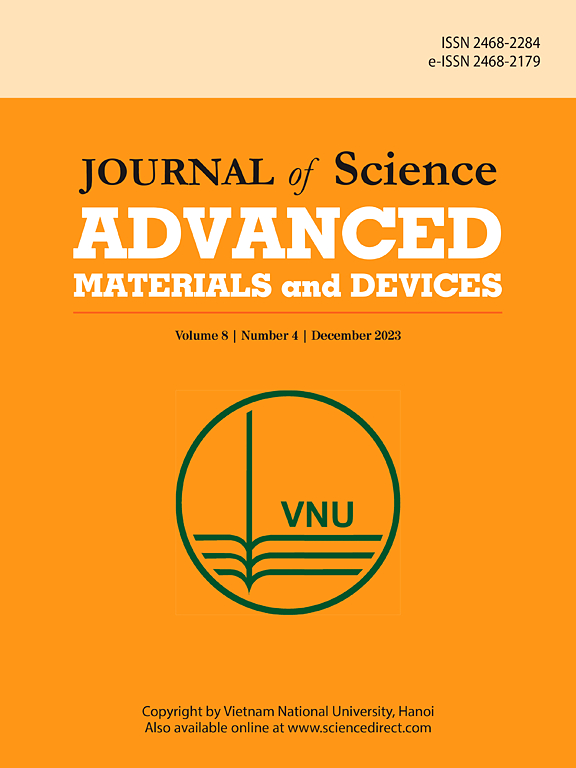Photoactive integrated microfluidic valves for on-chip fluid control
IF 6.7
3区 材料科学
Q1 MATERIALS SCIENCE, MULTIDISCIPLINARY
Journal of Science: Advanced Materials and Devices
Pub Date : 2024-11-17
DOI:10.1016/j.jsamd.2024.100814
引用次数: 0
Abstract
In microfluidics, on-chip fluid control is crucial for applications where programmable and automated fluid handling with low dead volume and limited auxiliary equipment is desired. This is, for instance, the case for point-of-care (POC) devices, especially in low resource settings. The integration of photoactive valves into a disposable microfluidic chip is one method of attaining low-power and non-contact fluid control in the blink of an LED. A liquid crystal network (LCN) based micro-valve was developed, which enables rapid fluid transfer on-chip by opening a venting channel upon illumination at 80 mW cm-2 with a 455 nm wavelength LED. We show in two proof-of-principle devices that multiple valves can be integrated into a 3D-printed microfluidic chip. Their individual actuation leads to directed sequential filling as well as draining of a reaction chamber, providing the prerequisite for intricate on-chip processes. Thus, our photoactive valves show the potential of facilitating programmable lab-on-a-chip experiments, for instance, for sample preparation such as for bind-wash-elute protocols, for immunoassay, or for amplification-based detection methods.
用于片上流体控制的光活性集成微流控阀门
在微流控技术中,片上流体控制对于需要可编程和自动化流体处理、低死体积和有限辅助设备的应用至关重要。例如,护理点(POC)设备就是这种情况,尤其是在资源匮乏的环境中。将光动阀集成到一次性微流控芯片中,是在 LED 闪烁时实现低功耗、非接触式流体控制的一种方法。我们开发了一种基于液晶网络(LCN)的微型阀门,它能在 455 纳米波长 LED 以 80 mW cm-2 的光照下打开一个排气通道,从而实现芯片上的快速流体传输。我们在两个原理验证装置中展示了多个阀门可以集成到 3D 打印微流控芯片中。它们的单独驱动导致反应室定向顺序填充和排空,为复杂的片上过程提供了先决条件。因此,我们的光活性阀门展示了促进可编程芯片实验室实验的潜力,例如,用于样品制备(如活洗消泡剂方案)、免疫测定或基于扩增的检测方法。
本文章由计算机程序翻译,如有差异,请以英文原文为准。
求助全文
约1分钟内获得全文
求助全文
来源期刊

Journal of Science: Advanced Materials and Devices
Materials Science-Electronic, Optical and Magnetic Materials
CiteScore
11.90
自引率
2.50%
发文量
88
审稿时长
47 days
期刊介绍:
In 1985, the Journal of Science was founded as a platform for publishing national and international research papers across various disciplines, including natural sciences, technology, social sciences, and humanities. Over the years, the journal has experienced remarkable growth in terms of quality, size, and scope. Today, it encompasses a diverse range of publications dedicated to academic research.
Considering the rapid expansion of materials science, we are pleased to introduce the Journal of Science: Advanced Materials and Devices. This new addition to our journal series offers researchers an exciting opportunity to publish their work on all aspects of materials science and technology within the esteemed Journal of Science.
With this development, we aim to revolutionize the way research in materials science is expressed and organized, further strengthening our commitment to promoting outstanding research across various scientific and technological fields.
 求助内容:
求助内容: 应助结果提醒方式:
应助结果提醒方式:


